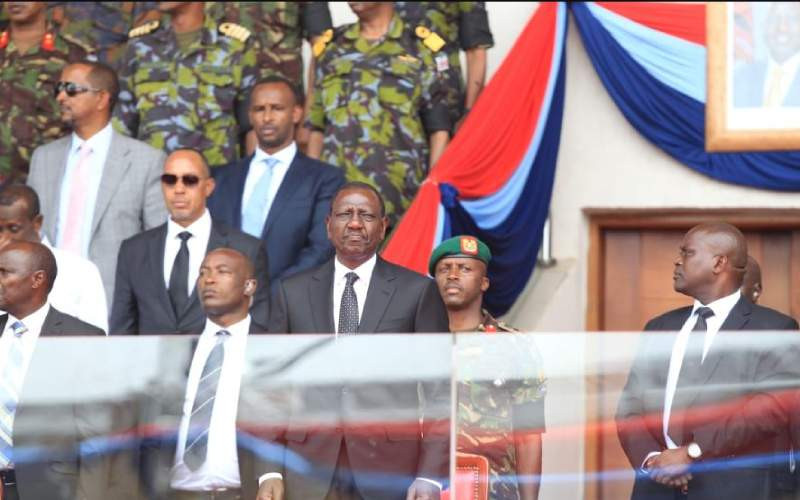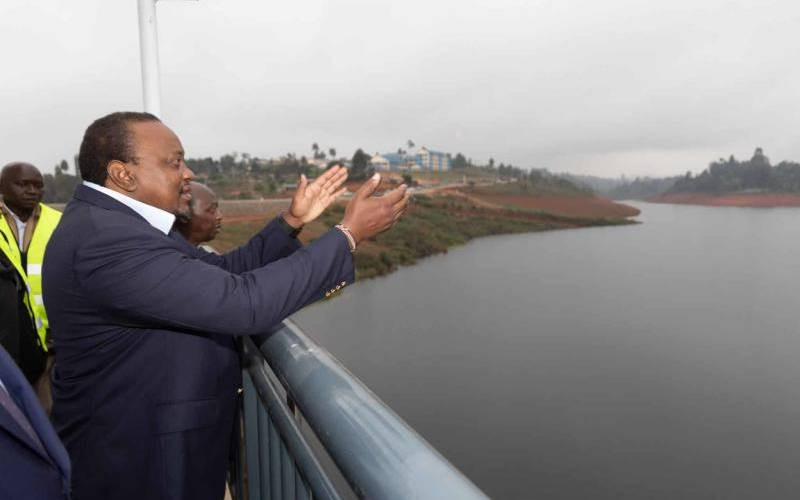Like all declarations, the historical importance of State of the Nation Addresses rest on the changes they trigger. Four years ago, President Kenyatta made a great speech to our Houses of Parliament on restorative justice, reconciliation and national unity. He revisited an important pledge this Thursday. Given the magnitude of grand graft, leadership conflict and drought, I suspect it may have been missed. Allow me to nudge our memories.
The displacement and violence after the 2007 General Election brought the nation to its knees. Commissioned by President Kibaki, the Truth, Justice and Reconciliation Commission (TJRC) handed over their report to his successor President Kenyatta five years later. The four-volume report analysed 42,465 statements, 1,828 memoranda and over seven decades of history. On March 26, 2015, Kenyatta arguably made one of his greatest speeches citing “the cynical and destructive politics of hate and division.” He offered a bold state apology to the nation, pledged a Sh10 billion Restorative Justice Fund and urged Members of Parliament to adopt the TJRC report.
As the president rose to address the nation this week, the Fund was yet to be operationalised, the report is not yet adopted by Senate and Government Printers have curiously opted to do a partial gazettement of the report. Sh3.4 billion was set aside for the Restorative Justice Fund in 2016/2017. The year closed with the money largely unutilised as the Office of the Attorney General who was unable to complete the necessary operational guidelines. The Guidelines were finally completed in 2018 but to date, no substantive actions have been taken to bring the Fund to life for the millions of victims of discrimination, displacement and violence.
Two substantive volumes namely 2A and 2B have been omitted from the March 22 gazettement of the TJRC report. Volume 2A traces the historical context of state violence against Kenyans from the colonial period to the post-colonial Governments of Jomo Kenyatta, Daniel arap Moi and Mwai Kibaki. Its 750 pages records unlawful killings, forced disappearance, detention, displacement and sexual violence at the hands of radicalised state officers. Five hundred and fifty pages of Volume 2B capture in painful detail, the specific experiences of countless women, children, minority and indigenous peoples. Ironically, one of victims of detention, torture and ill-treatment erased in the omission of this volume is the first mother, Ngina Kenyatta (35947).
Their courage, resilience and survival strategies are told in their own authentic voices. It is possibly unfair of me to impute that fear or shame has led to this omission. What is clear, is that we have dishonoured this community by attempting to bury their stories. Fortunately, the Digital Commons project of the Seattle University School has made all the volumes available to download and learn from our history.
Just in case some of you “Kessimists” (Kenyan pessimists) think political amnesia is particularly Kenyan, take comfort. This week, most Americans are struggling to understand how Special Counsel Mueller’s 400-page Trump Putin 2016 election conspiracy report got summarised into four pages by the Attorney General. Perhaps our very own “The Elephant” could return a favour and host all 400 pages for the American public?
There is a lesson for us all. Memories are fundamentally irrepressible. Scientists describe this as optogenics. By flooding brain cells with light, even amnesia can be reversed. Secondly, conscience is a critical national muscle. We must find better ways of completing difficult historical stains and creating platforms for future compassion and care. This was, I believe, the essence of Kenyatta’s 2015 speech.
Establishing sites of conscience can do this. The Sierra Leone peace museum, the German Stazi museum and the Smithsonian National Museum of African American History and Culture are dynamic examples of publicly funded programs, exhibitions and galleries.
Besides collective truth-telling, we also must encourage swift prosecution of perpetrators and compensation for victims. By doing this globally, we also address xenophobia and racial violence in South Africa, thousands of refugee deaths in the Mediterranean Sea and growing extremism and intolerance in the world. Hiding the past is futile. As the late Canadian poet Leonard Cohen would say, “There’s a crack in everything, that’s how the light gets in.”
- The writer is Amnesty International Executive Director. [email protected]
 The Standard Group Plc is a
multi-media organization with investments in media platforms spanning newspaper
print operations, television, radio broadcasting, digital and online services. The
Standard Group is recognized as a leading multi-media house in Kenya with a key
influence in matters of national and international interest.
The Standard Group Plc is a
multi-media organization with investments in media platforms spanning newspaper
print operations, television, radio broadcasting, digital and online services. The
Standard Group is recognized as a leading multi-media house in Kenya with a key
influence in matters of national and international interest.
 The Standard Group Plc is a
multi-media organization with investments in media platforms spanning newspaper
print operations, television, radio broadcasting, digital and online services. The
Standard Group is recognized as a leading multi-media house in Kenya with a key
influence in matters of national and international interest.
The Standard Group Plc is a
multi-media organization with investments in media platforms spanning newspaper
print operations, television, radio broadcasting, digital and online services. The
Standard Group is recognized as a leading multi-media house in Kenya with a key
influence in matters of national and international interest.









